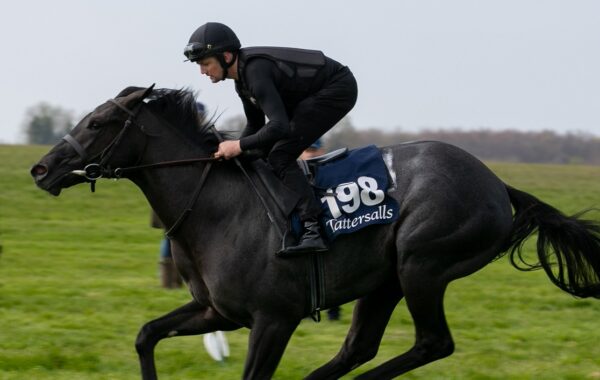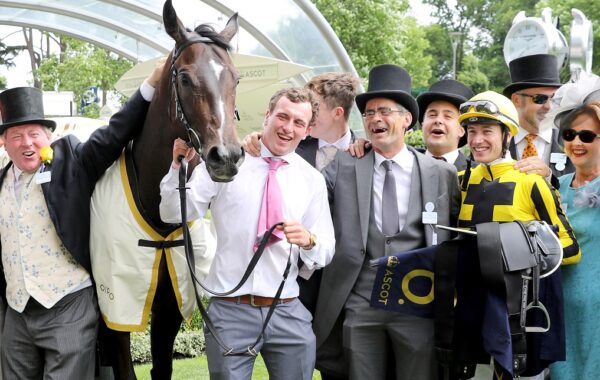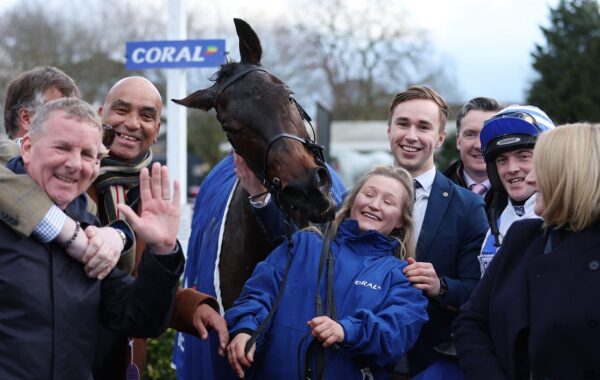The saying holds that the only way to make a small fortune out of racing is to start with a large one. John Gunther and his daughter, Tanya, are doing it the other way round.
It was just over 30 years ago that Gunther, a now-retired stockbroker from Canada, bought out his partners in the 350-acre Glennwood Farm in Versailles, Kentucky. Glennwood’s purchase marked the moment when the father/daughter axis immersed themselves in a pursuit that would enrole them into the most exclusive club of all. In June 2018 they became one of just thirteen entities to breed a US Triple Crown winner.
It didn’t stop there. One year after Justify had carried all before him, a colt who’d shared his paddock at Glennwood came of age in 2019. Vino Rosso broke throughas a Grade 1 winner in the Gold Cup at Santa Anita before running clean away with the Breeders’ Cup Classic.
If that were not enough, on that same November afternoon Without Parole came with a late rattle to finish third in the Breeders’ Cup Mile. The son of Frankel is owned and was bred by the Gunthers, who keep between six and ten mares annually in Europe. On that occasion Without Parole was introducing himself to American racegoers, having won the St. James’s Palace Stakes in 2018.
The Gunthers were in thrall that day. They’d seen Frankel triumph on their annual visits to Royal Ascot; now they were standing in the very same winner’s circle with a homebred son of the great horse.
“These things leave an impression,” Tanya says. “My dad and I went down to the rail and watched Frankel from there. Seeing him win remains a big highlight. We admired the greatness of his sire, Galileo, and it became clear to us that turf bloodlines in Europe were superior to the US. We decided to come over and try and breed to the best – even though it seemed a little crazy.”
That facet identifies the Gunthers as rare among American breeders. The European scene was awash with their ilk for two decades from the mid-1960s.
So much so that the Derby trophy was marked “for US export” four times in five years from 1968, when the totemic race was won by Raymond Guest (Sir Ivor), Charles Engelhard (Nijinsky), Paul Mellon (Mill Reef) and John Galbreath (Roberto).
One of the last to end his European involvement was Lane’s End Farm’s proprietor Will Farish III, who signed off soon after Casual Look won the 2003 Oaks from Andrew Balding’s stable. The two industries became polarised thereafter, with virtually no interaction.
“When we started coming to Royal Ascot [around a decade ago] we never saw anyone we knew,” Tanya relates. “We’d see [US trainer] Wesley Ward but his owners didn’t come with him. That is changing now: Todd Pletcher was at Ascot two years ago, while Chad Brown came to the [Tattersalls] sales last year.”
Without Parole takes the story back to the time when the Gunthers embraced the European breeding scene – although John had raced a handful of horses with Peter Chapple-Hyam, Dermot Weld and John Gosden in the 1990s.
In some ways it was a natural extension of his thinking. “Dad has always liked coming to Europe,” Tanya says. “He thinks outside the box and has always liked turf bloodlines. In the early days he’d buy the odd mare in Europe with elements of an American pedigree and take her back home.”
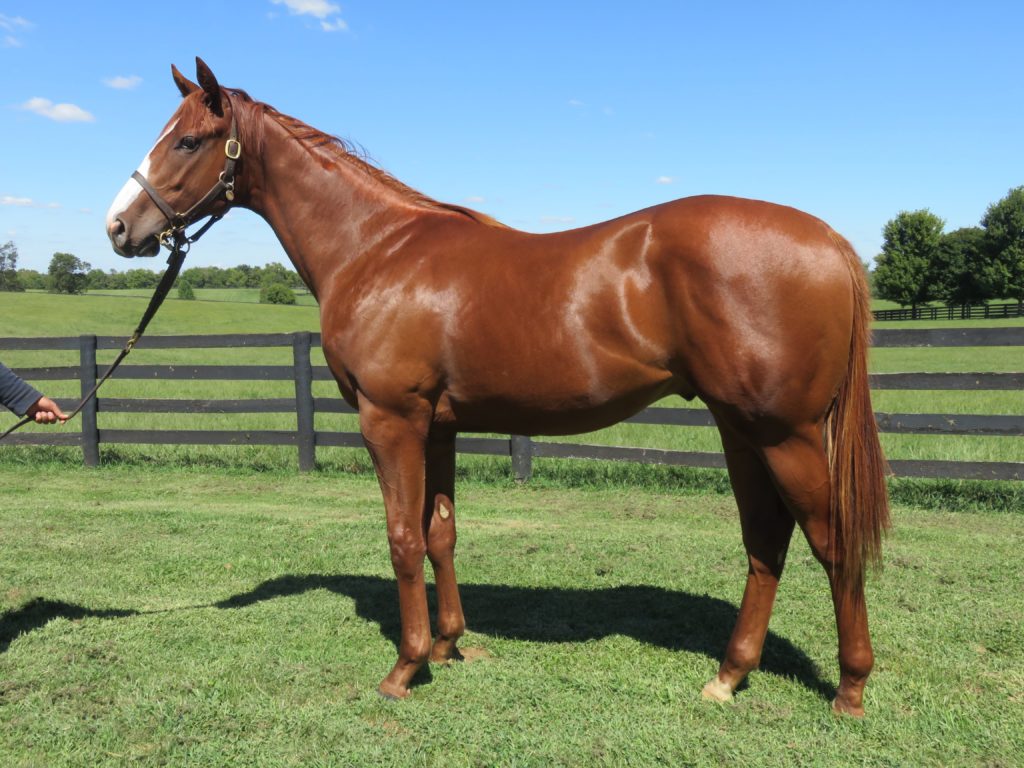
Triple Crown hero Justify picture as a yearling at Glennwood Farm – Photo: Tanya Gunther
The experience of seeing Frankel in the flesh set the tone. In 2012 they sent Without Parole’s second dam, Marozia, to be bred to Frankel’s sire, Galileo, with tragic consequences.
Marozia died of colic without producing a foal and was buried in the Coolmore graveyard. But the Gunthers were undeterred. In Marozia’s place they sent her daughter, the unraced Lemon Drop Kid mare Without You Babe, to Frankel’s court in 2014.
Without Parole was the consequence of that tryst. He vindicated the Gunthers’ decision to patronise European sires while compensating them in part for the loss of Marozia, who was a Glennwood foundation mare.
Marozia’s purchase is redolent of John Gunther’s approach. He gave just $50,000 for her at Keeneland in 2003, when she was nine years old. Remarkably, she’d been led out unsold from the same auction ring three years earlier, when the bidding stalled at $575,000.
That alluded to Marozia’s noble ancestry. Bred and raced by Sheikh Mohammed, she won a humble race at Lingfield but was a desirable breeding prospect. Her dam, the Roberto mare Make Change, was a Graded stakes- placed daughter of the King Ranch-bred Equal Change, who had chased home champion Ruffian in the 1975 Coaching Club American Oaks.
Marozia’s undistinguished racing record was immaterial to Gunther. It simply served to make her more affordable, and he’d long since gravitated towards broodmares on the strength of their back- pedigrees. It was a similar story with Vino Rosso’s dam, the Street Cry mare Mythical Bride. Gunther gave just $42,000 for her as a three-year-old in 2011.
It was Tanya who devised the mating that would yield Vino Rosso. She felt Curlin was an ideal fit when the stallion’s fee was just $25,000.
A similar premise governed Justify’s creation. Tanya’s penchant for inbreeding saw her settle on Scat Daddy and an ideal mate for Justify’s dam, Stage Magic. Their coming together would fuse the blood of a pair of Mr. Prospector full-sisters in Preach (dam of Pulpit), and Yarn (dam of Minardi and Tale Of The Cat). At that time Scat Daddy stood at $30,000.
Such studied intuition has allowed the Gunthers to raise their sights in terms of buying stallion power. Their reputation as breeders of racehorses, as opposed to sales show-ponies, is now firmly established. Most of their annual yearling crop end up at the sales and their better offerings have recently been fetching higher and higher prices.
That trend is mirrored in their European venture, which has evolved over less than ten years. Most of their mares reside at Newsells Park Stud, from where their yearlings are consigned.
In 2015 they bought Midday’s three-year-old full-sister Posset from Juddmonte and sold her yearling colt by Galileo for 1.1 million guineas in 2018. In the same Tattersalls draft was another by Galileo, this one a filly out of Wildwood Flower, who fetched 900,000 guineas.
But every coin has two sides. Also in 2018, the Gunthers consigned a yearling colt from the first crop of the Poule d’Essai des Poulains and Breeders’ Cup Mile winner Karakontie at Keeneland, where he ended up in Book 5 of the September Sale. He fetched just $6,000, all but breaking Tanya’s heart in the process.
“We decided to come over and try and breed the best to the best”
“When you’re in Book 5 your potential is limited even before you get there,” she says. “You’re down in the basement and you’re at a loss from the stud fee, never mind the time you put into raising and prepping the horse.”
Even if the Karakontie had perfect physicals, the financial writing was already on the wall. “There’s a disconnect in the American yearling market with a purely turf-bred horse,” she says. “Buyers are not that interested unless the stallion is really high-profile.”
However, the Karakontie colt was bred because Tanya considered the union of his parents attractive from a racing perspective. He is inbred to the mighty Miesque, and has done her proud to date.
Named Kenzai Warrior, the colt was bought by European interests, was resold by Brown Island Stables as a Doncaster breezer and went into training with Roger Teal. He won both his juvenile starts last season, latterly in the Group 3 Horris Hill Stakes. Making his seasonal debut in the 2,000 Guineas, Kenzai Warrior stumbled upon leaving the stalls and was never seen with a chance. He returned fine, however, and lives to fight another day.
Even in the warm afterglow of the last two years, Tanya can incline towards melancholy when contemplating life as a commercial breeder. She came to it via a route as interesting as it is unusual: 12 years ago she took over the running of Glennwood after quitting her London- based job in investment banking.
It was an arduous environment that saw her working day end anywhere between 10pm and 3am. In those years she wasn’t even able to go to Royal Ascot, but she learnt an invaluable cross-over skill-set. A propensity to analyse every last detail, a trait of her former profession, characterises her approach to breeding horses.
Although she has found greater fulfilment, there is a paradox about her second career. She uprooted from London because she sought passion within her work. She found that in spades when she settled at Glennwood, which has echoes of her idyllic childhood spent around horses. But the catch is that horses must be sold to balance the books.
Her eyes radiate excitement when she talks about seeing the new-born foals. “They bring hope every year,” she says. “For me it’s a bit like opening Christmas presents. You’re waiting on them for over 11 months, so it’s nice to see the results of all your planning and thinking.”
Eighteen months on, however, and it is yearling sales time. The fact that most of the homebreds must find new homes is a process that fills her with foreboding.
“I don’t particularly like the sales but it’s a means to an end,” she says. “I spend a lot of time thinking about the horses before they are born: creating them, raising them, trying to keep them alive and prospering. To then sell them literally feels like you are selling the dream.”
Much though Justify’s unbeaten racing career represented a pinnacle for Glennwood, his own sale as a yearling was not without its share of trauma.
“Even though we’ve sold good racehorses, we don’t have too much of a history of selling high-priced horses,” she reflects. “But I thought if we were going to kick it out of the park one year, Justify could be the one.”
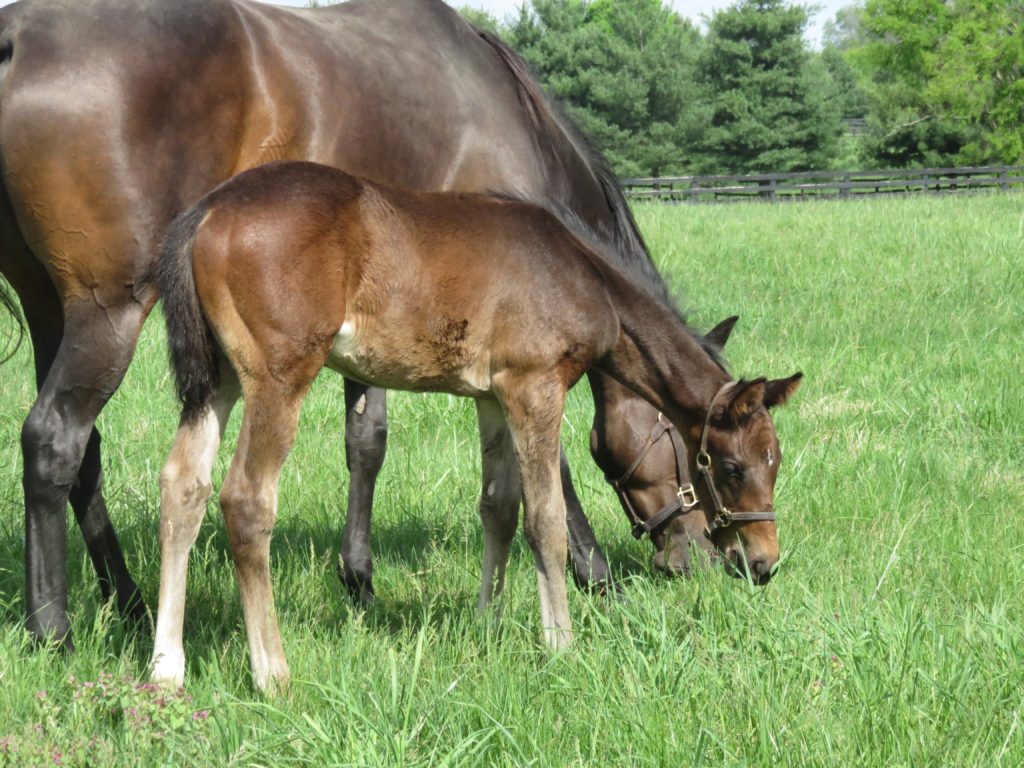
Kenzai Warrior pictured as foal – Photo: Tanya Gunther
In the end Justify was bought by the China Horse Club/Maverick Racing axis for $500,000. “It’s not a small amount,” she continues, “but considering how we felt about him as one of the best we’d bred, and how he moved and looked…
“But he didn’t please everyone. Sometimes you go with a horse knowing he’s not going to pass the vet for certain people. With Justify, we didn’t know until we got to the sales that people would take exception to certain things. We could see it happening before our eyes.”
As Tanya speaks, it becomes clear she came to regard the young Justify as an extension of her family. But it wasn’t just him: she shed tears when Vino Rosso, from the same yearling draft, was sold two days later for $410,000.
“Part of the reason I find the sales tough is because I take things personally,” she says. “I think it’s a good thing; it means you are putting everything you have out there. Some people think it’s a negative but I don’t agree. If I take it personally it’s because everything I do in this business, I do the very best I can.”
Tanya puts immense thought into mating scenarios for the broodmare band at Glennwood, which might number anything between 18 to 25 mares, including those owned in partnerships. Despite rising sales receipts, the Gunthers can’t send every one of those mares to the established sire elite.
“I am curious by nature,” she says. “I worked in a business [investment banking] where everything is constantly being questioned and analysed, and that definitely made me approach this business differently to the way I otherwise would have.
“Dad thinks outside the box and has always liked turf bloodlines”
“I analyse the stallions and their stats,” she continues. “I look at their numbers; try to figure things out.
“I particularly look for stallions that are underappreciated, and therefore more affordable, but which can still deliver quality racehorses. It helps to be able to identify a few that don’t stand for six figures.”
Inevitably, there will always be yearlings that don’t sell, which the Gunthers are more than happy to race for themselves. In Tanya’s perfect world she would race them all, emboldened by the knowledge that they would be given the maximum care and attention at all times.
That’s because she is besotted by horses, just as she was in formative years when she rode around the family farm in Langley, British Columbia, and went racing to nearby Hastings Park on weekends.
To her, horses are a source of constant fascination.
“I used to break our yearlings on the farm,” she reflects. “It never ceases to amaze me that they would let you get up on their backs in the first place. I don’t think I would have been a very good yearling: I would definitely have bucked my rider off. Or tried to.”



